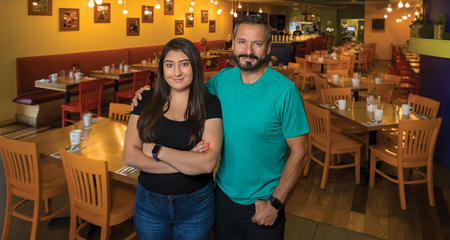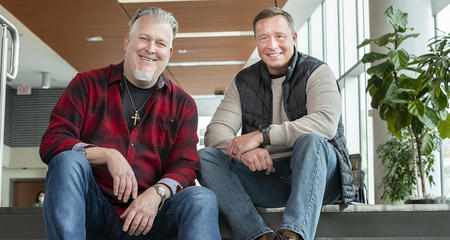
Amid Organ Donor Shortage, Innovations Offer More Options to Patients
Strategies to widen the donor pool and buy more time for people on wait lists provide relief

The list of people waiting for a lifesaving organ transplant is more than 113,600 names long,1 and every 10 minutes, another person is added to the list.2 Many people will wait months or years for a suitable organ, and some will not survive long enough to get a transplant. According to data from the U.S. Department of Health and Human Services, each year, the number of people listed for transplant continues to be much larger than both the number of donors and transplants.3 This is why innovative ways to not only widen the available pool of organ donors, but also keep people waiting for transplants alive longer, are so important.
Kidney
Kidneys are the most commonly transplanted organ, and the number of people on the wait list for a donor kidney far surpasses that of any other organ. Nearly 95,000 are waitlisted for a kidney,4 and most of these people will wait about four years to receive a kidney from a deceased donor.5 People waiting for a kidney transplant are often treated with dialysis while they wait.
Living kidney donation
Each person is born with two kidneys, but our bodies can function normally with just one. Because of this, living kidney donation is the main way to make more kidneys available for transplant.
A donor does not need to be biologically related to the recipient in order to donate. Compatibility is based on blood and tissue type, as well as antibody profile. When a living kidney donor match is secured for a transplant candidate, other candidates move up on the wait list.
According to the National Kidney Foundation, most people who donate kidneys do not have health problems later in life associated with donating an organ.6 One of the largest studies on the topic, published in the New England Journal of Medicine, found the life expectancy of a living kidney donor is similar to that of a non-donor; and living kidney donors are not at an increased risk for kidney failure.7
Additionally, kidneys received through living donation have a 15 percent higher ten-year organ survival rate than kidneys received from a deceased donor, according to the U.S. Organ Procurement and Transplantation Network (OPTN) and the Scientific Registry of Transplant Recipients (SRTR).8
Kidney exchange programs
Even with a willing donor, nearly a third of kidney transplant candidates do not match their intended donor due to blood type or tissue incompatibility. In this case, paired exchange programs are a viable option.
Global kidney exchange is a new strategy to expand the donor pool. A handful of these paired exchanges have taken place with donors and recipients across international borders. The Froedtert & MCW End-Stage Kidney Disease and Kidney Transplant Program participated in a global kidney exchange in 2018.
Liver
While dialysis can buy kidney transplant candidates more time, there are no alternative therapies for liver failure. Livers are the second most in-demand organ for transplant. The most commonly performed liver transplant surgery is one where the organ is from a deceased donor.
“Many livers from deceased donors are not suitable for transplant with the current organ preservation process,” said Joohyun Kim, MD, PhD, abdominal transplant surgeon. “But, it is crucial to find ways to use all available livers. Many studies are under way, including ours, to prevent organ discards and increase the success rate.”
Lung
For people with end-stage lung disease, a lung transplant is the only lifesaving treatment. Unfortunately, most donor lungs cannot be used for transplant. According to the American Lung Association, only 28 percent of donor lungs meet transplant criteria.9

“Lungs are uniquely fragile organs,” said Lucian Durham, MD, cardiothoracic surgeon at Froedtert & MCW Froedtert Hospital. “They are particularly susceptible to inflammation and damage in the transplant process.”
Ex vivo lung perfusion
Ex vivo lung perfusion (EVLP) is a leading-edge technique to improve the quality of donor lungs so they meet the criteria for transplant, and it extends the distance they can be transported. Donor lungs are placed on a device that includes a ventilator to inflate and deflate the lungs and a pump to circulate the blood, while maintaining them at normal body temperature. The lungs are treated with nutrients and drugs to improve their quality for transplant.
“EVLP removes some of the limitations with lung transplant,” Dr. Durham said. “It allows more donor lungs to be rehabilitated for transplant, and it also keeps donor lungs viable for an extended period of time.”
Only a few centers in the world have the expertise to offer EVLP, including Froedtert & MCW Froedtert Hospital.
Heart
Heart failure is a disease that affects more than six million Americans.10 It is one of the most common conditions in people over the age of 65, and according to the American Heart Association, about 10% of people with heart failure are in the advanced stage.
For the majority of end-stage heart failure patients, a heart transplant is the treatment of choice, but only a small subset of the population can get a heart transplant because of a dire shortage of donor hearts. The wait time for a donor heart depends on the severity of a person’s heart failure.
Ventricular assist device
A ventricular assist device, also known as a VAD, pumps blood from the lower chambers of the heart to the rest of the body. Different types of VADs are used depending on an individual’s needs. VADs allow some people to survive up to ten years while waiting for a donor heart to become available. The devices can be used as a bridge to transplant, or, for people who are not good transplant candidates, VADs can be used as destination therapy. In this case, the device is a permanent treatment.
Total artificial heart
A total artificial heart (TAH) is a pump that replaces both of the heart’s ventricles and pumps blood out of the heart to the rest of the body. An external, rechargeable driver delivers compressed air through tubes that come out of a person’s side, which help blood flow to the heart. The driver is portable and can be carried around in a backpack.
Froedtert & MCW physicians are participating in a national clinical trial to see if people can live permanently with a total artificial heart.
Extracorporeal membrane oxygenation
In addition to VADs and TAHs, extracorporeal membrane oxygenation (ECMO) is another treatment that serves as a bridge to heart transplant. People who need ECMO are in severe and life-threatening condition. The ECMO machine offers life support by taking over heart and lung function and pumps blood through an external circuit.
The bottom line
In 2018, there were more organ transplants in the United States than ever before. According to the United Network for Organ Sharing (UNOS), the nonprofit organization under contract by the government to manage the country’s transplant system, there were more than 36,500 transplants nationwide and nearly 6,900 living donor transplants — the highest total of living donor transplants in more than a decade11 — and despite this, there is still a shortage of donor organs. Registering to be an organ donor is an important step to bridge this gap and help saves lives.
For more information about organ donation, visit: froedtert.com/donatelife.
1 https://unos.org/data/transplant-trends
2 https://www.organdonor.gov/statistics-stories/statistics.html
3 https://www.organdonor.gov/statistics-stories/statistics/data.html
4 https://optn.transplant.hrsa.gov/data/
5 https://transplantliving.org/kidney/the-kidney-transplant-waitlist
6 https://www.kidney.org/news/kidneyCare/spring10/KidneyDonation
8 https://onlinelibrary.wiley.com/doi/10.1111/ajt.15274
9 https://www.lung.org/about-us/blog/2018/09/things-to-know-about-lung-transplants.html


